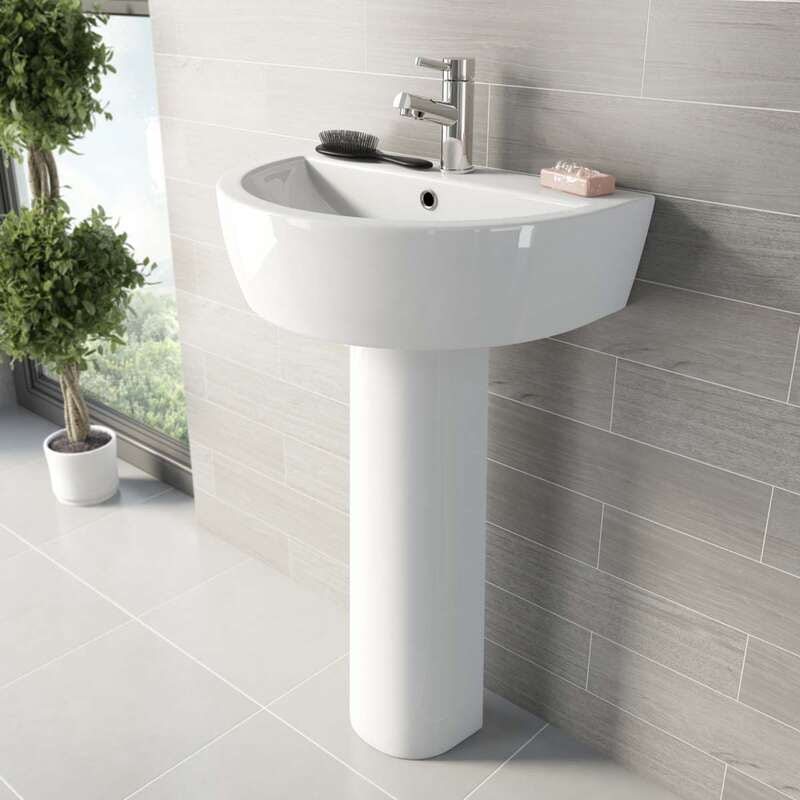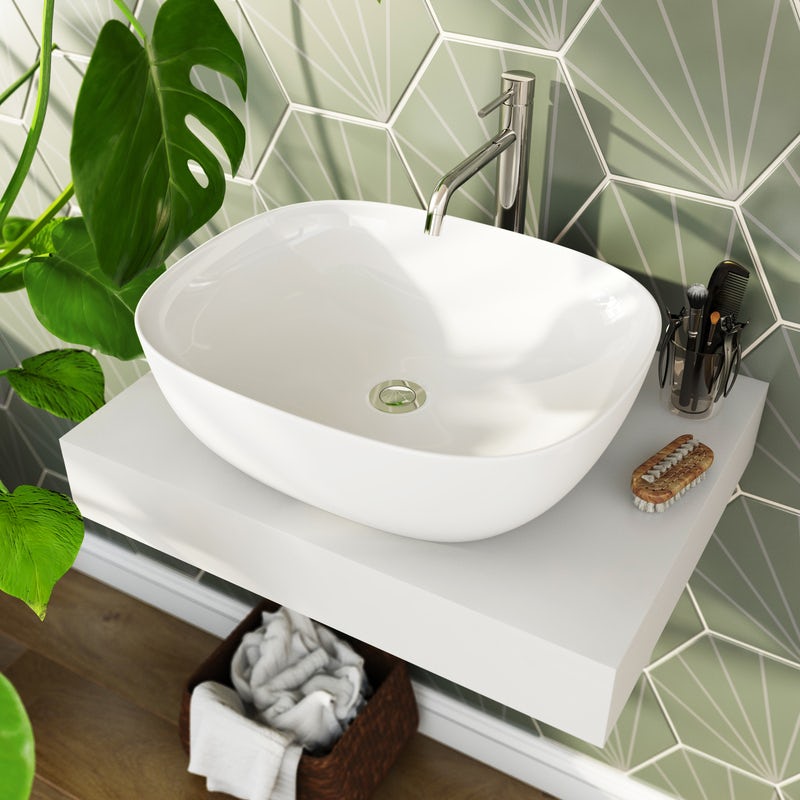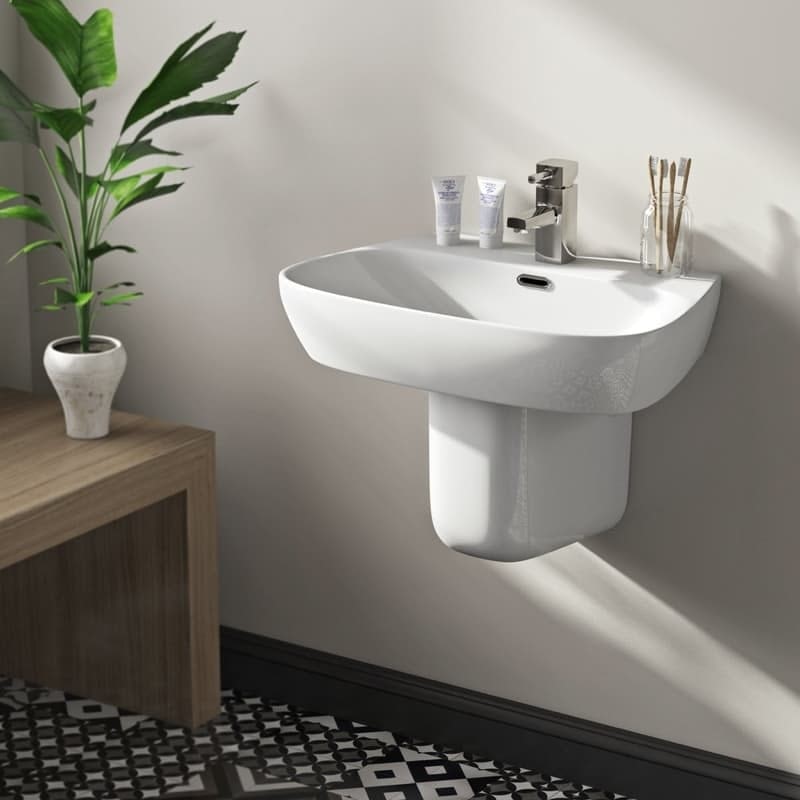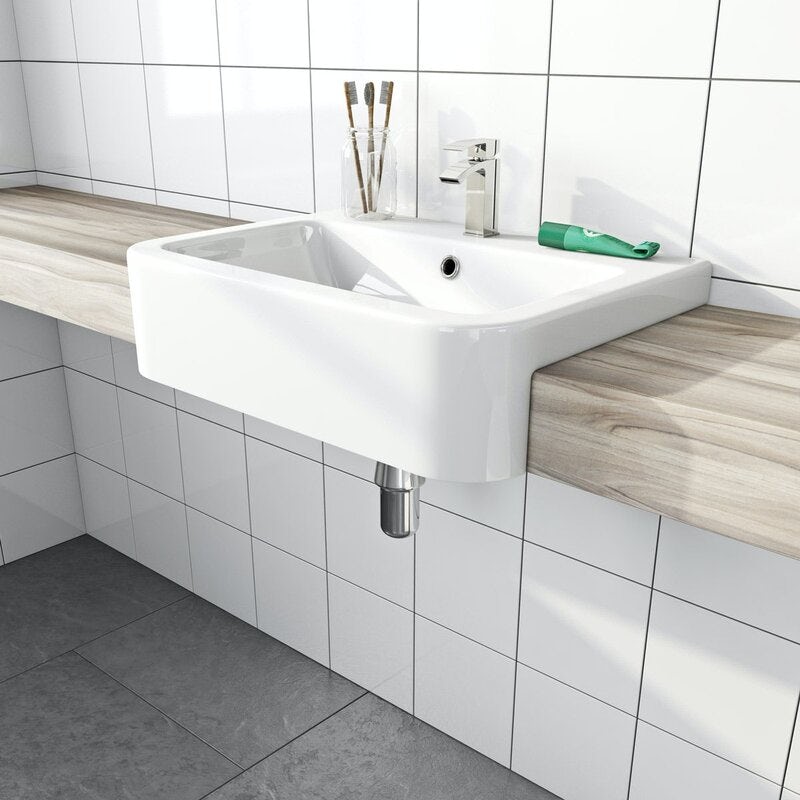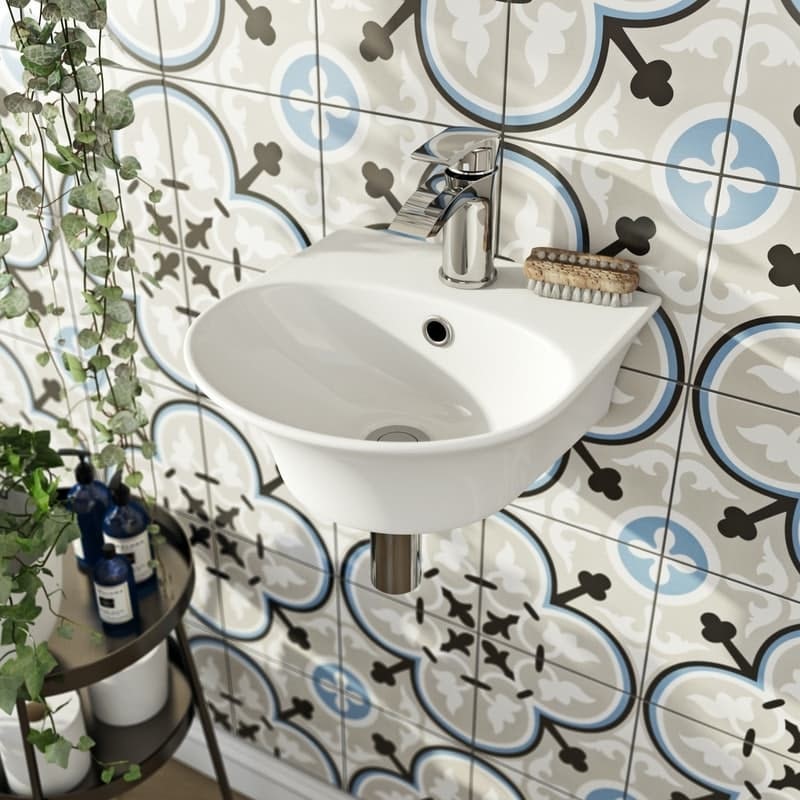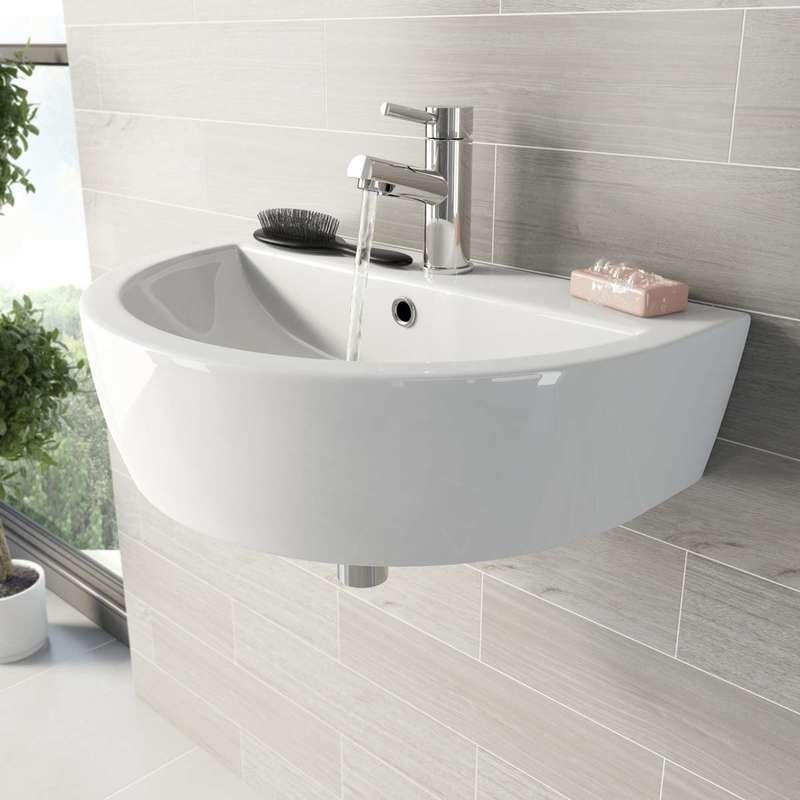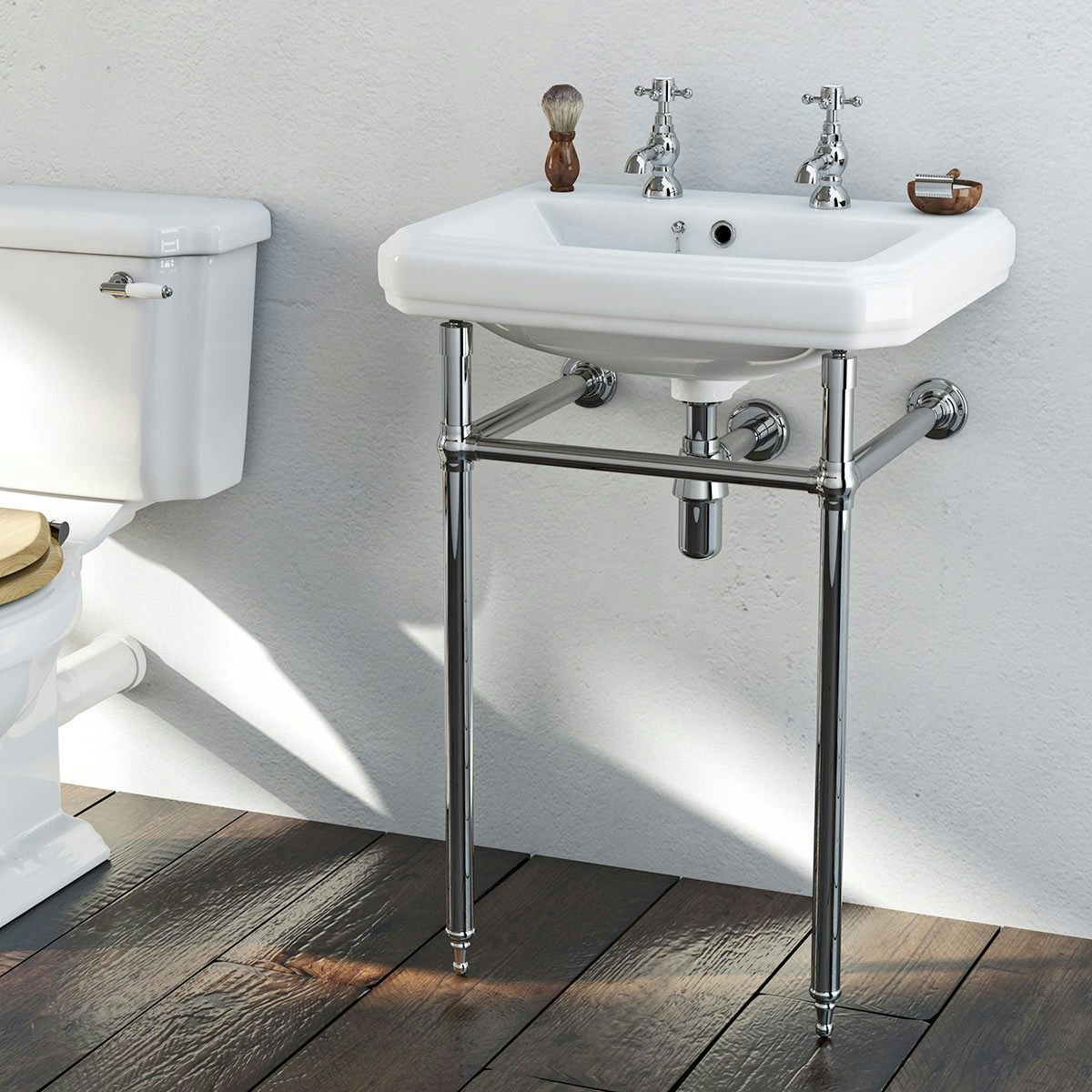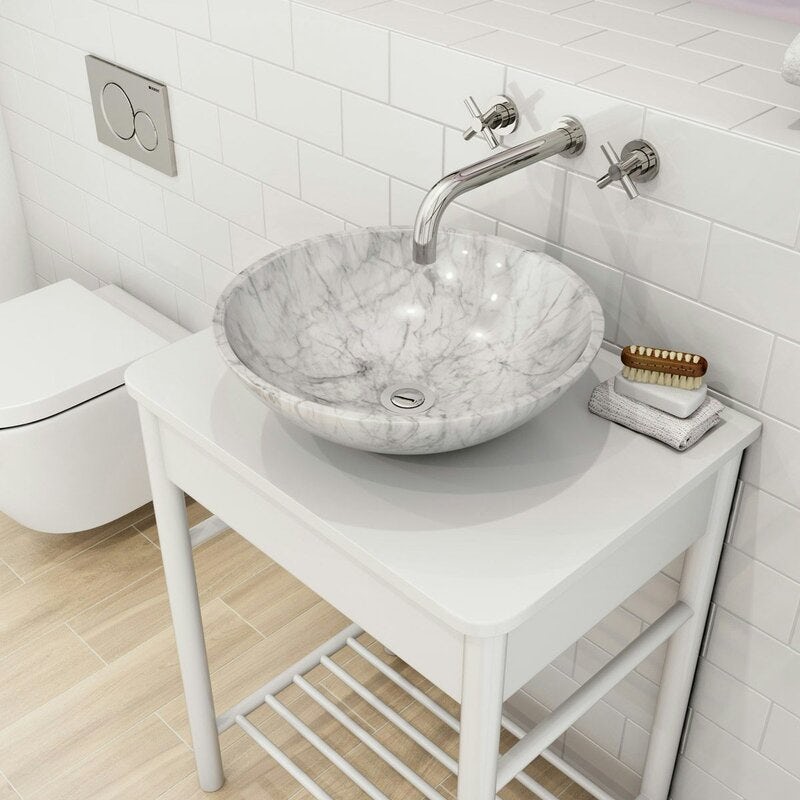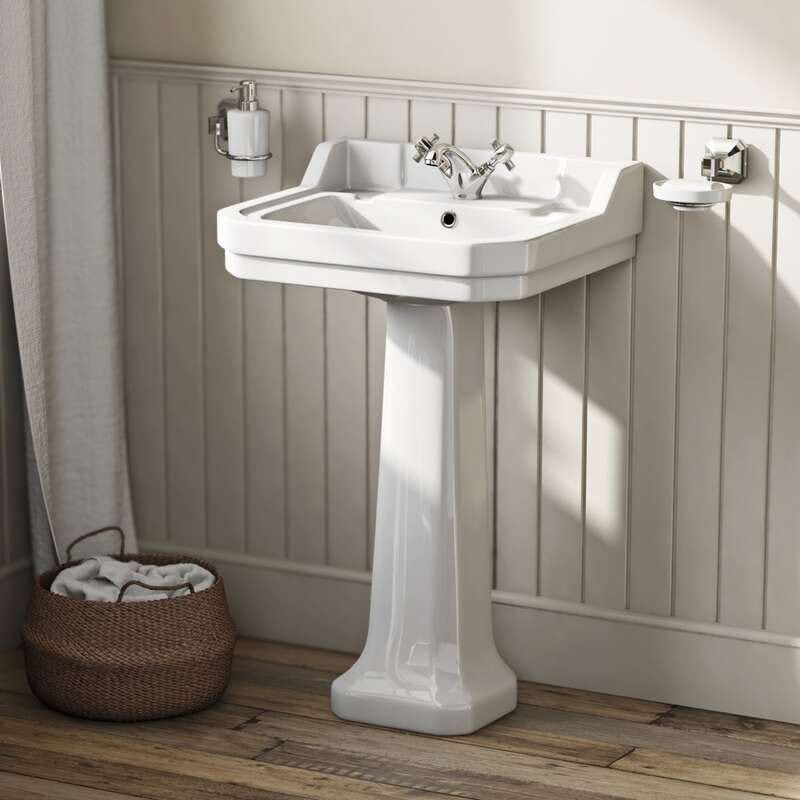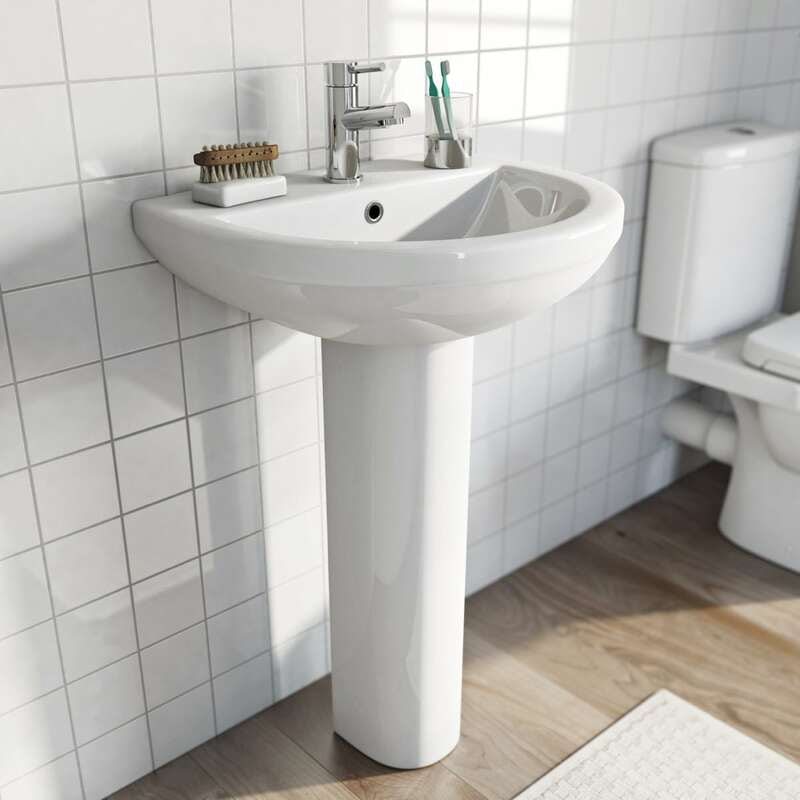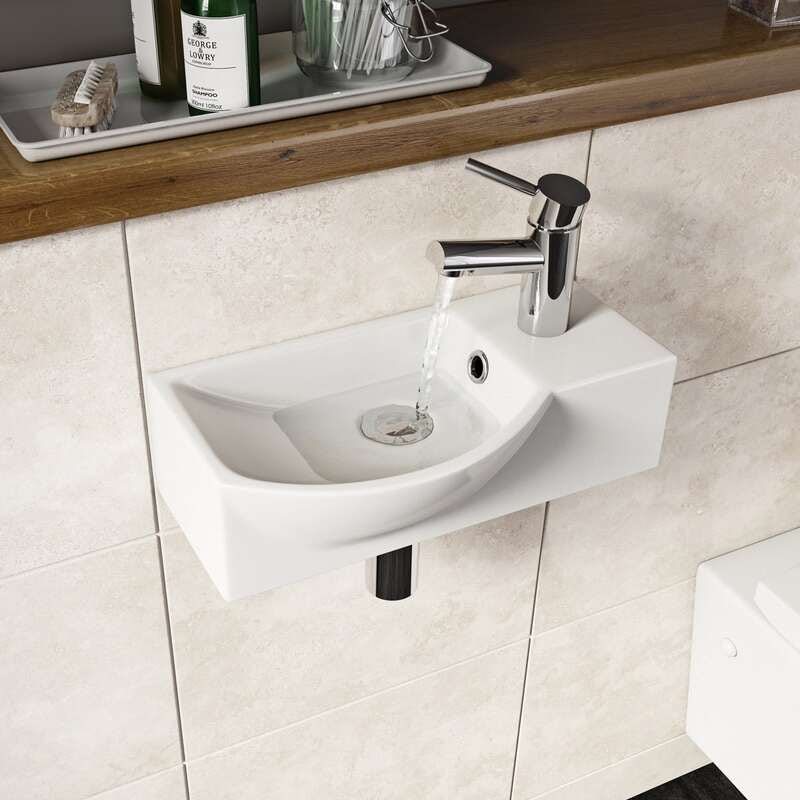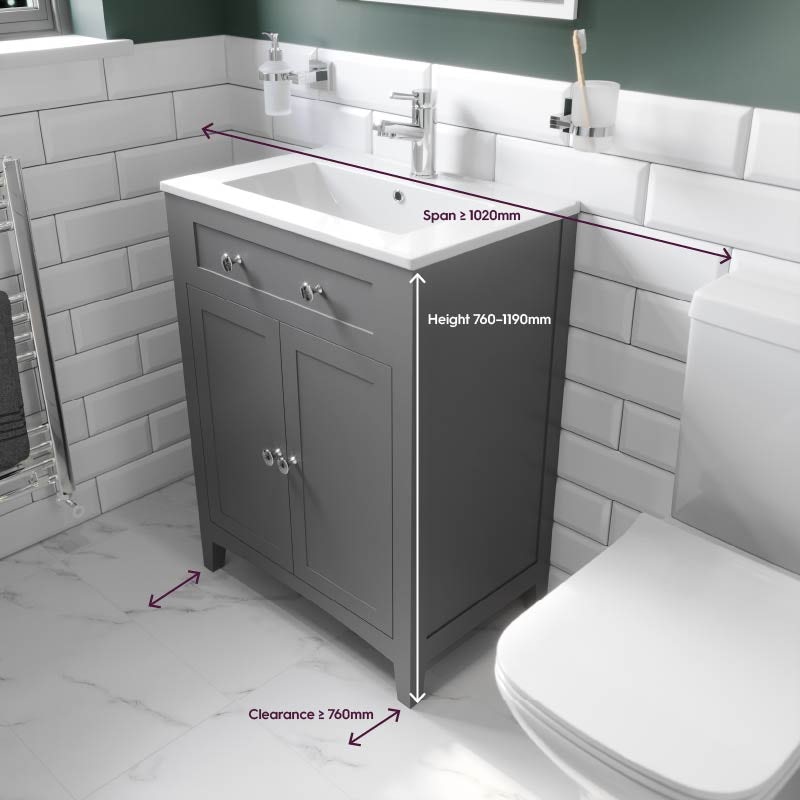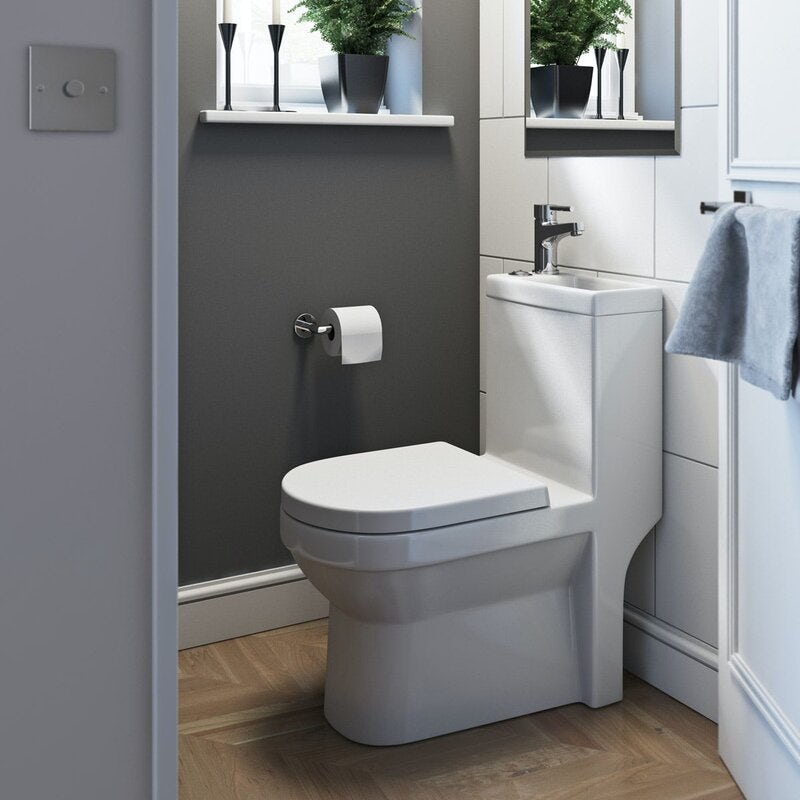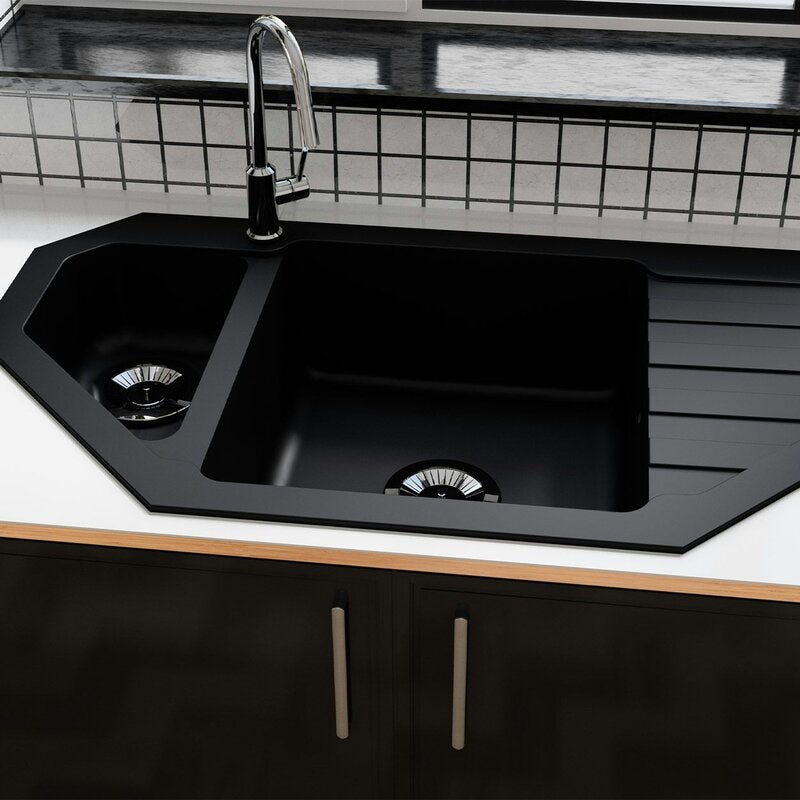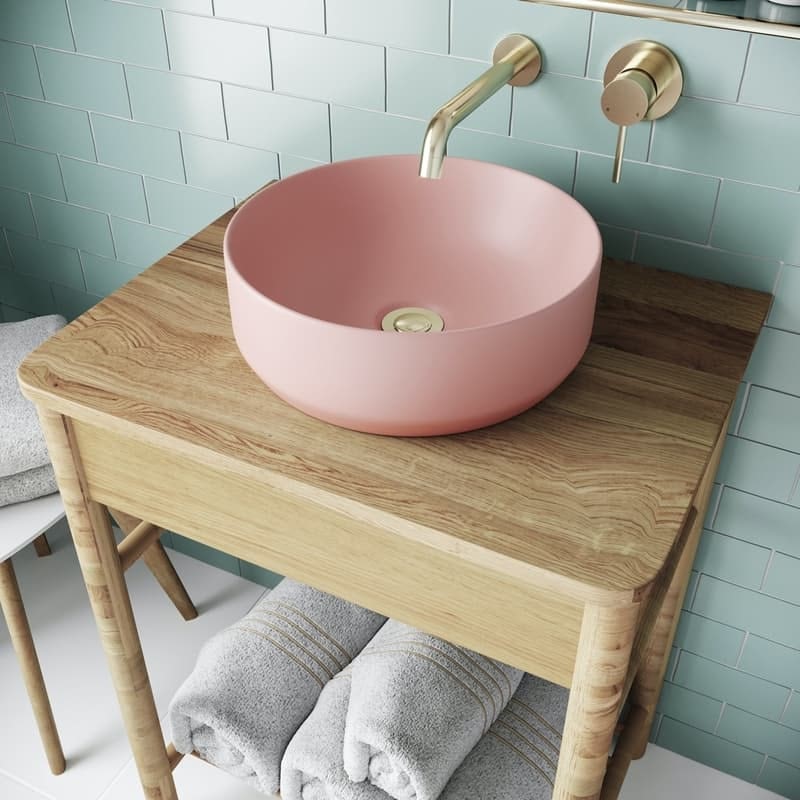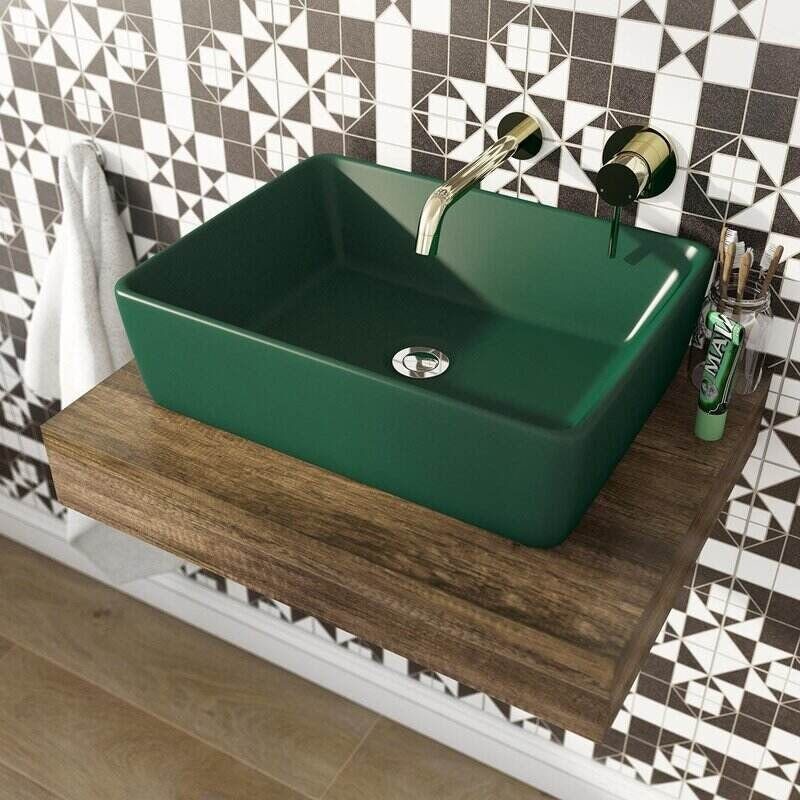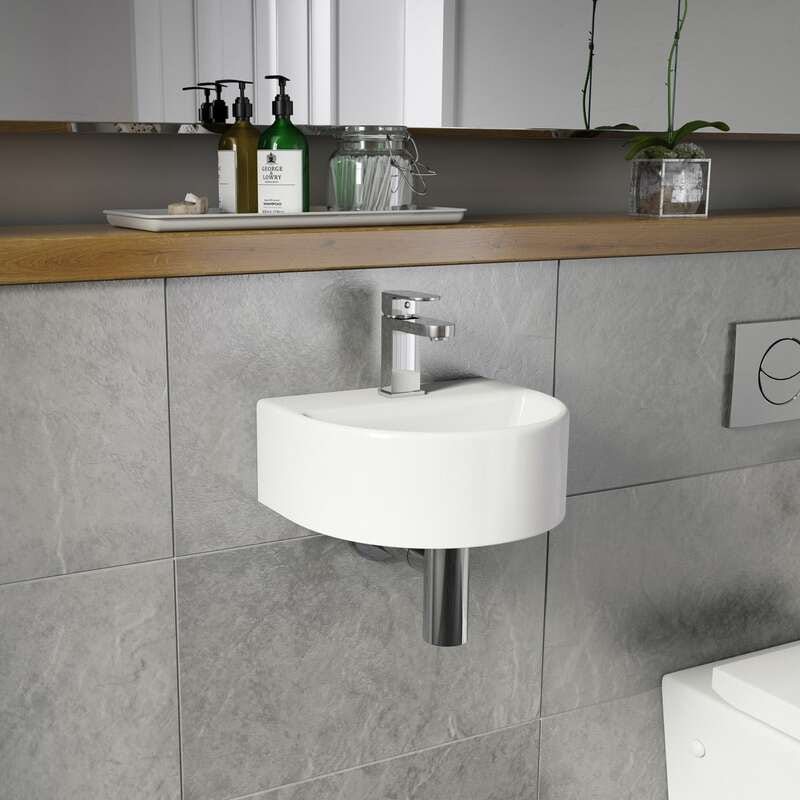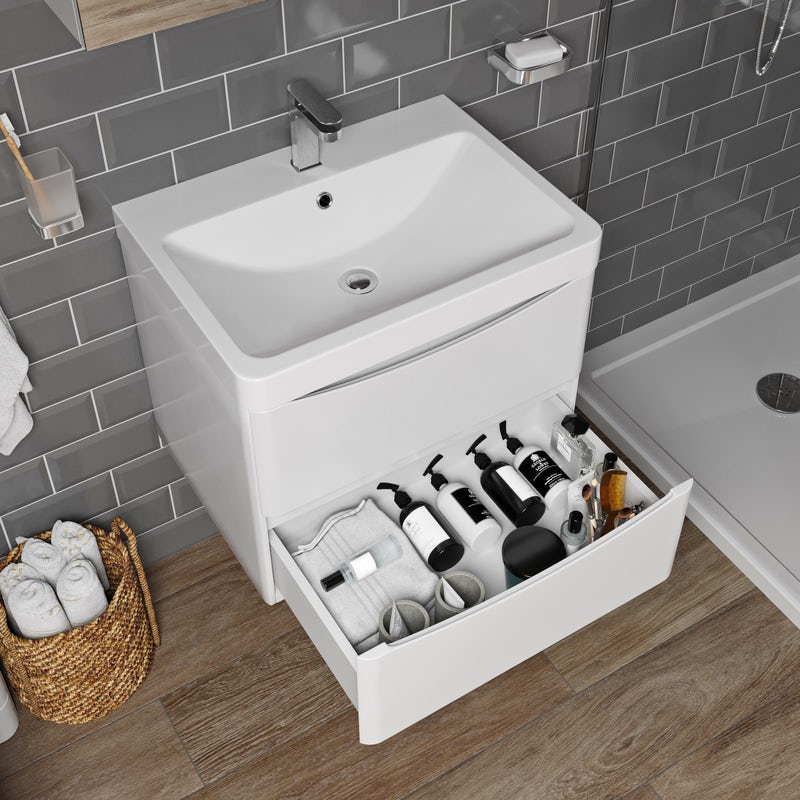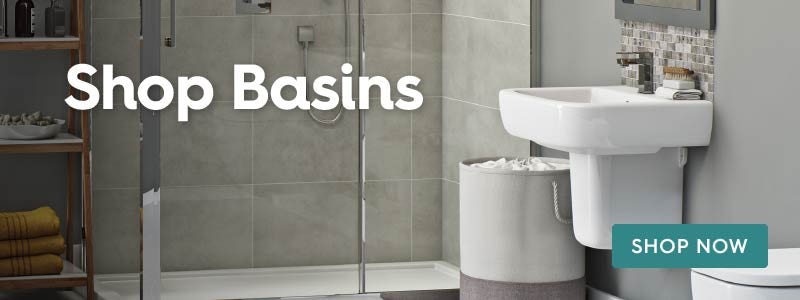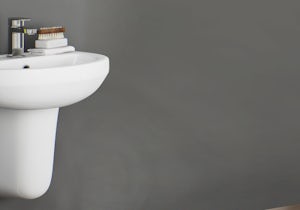Do you have gaps in your knowledge where basins are concerned? Allow us to fill in the facts…
Hi, my name’s Adam, and I’m the resident bathroom buff here at Victoria Plum. For almost 11 years, I’ve been busy answering your questions and queries about showers, suites and just about anything else you’d expect to find in your “smallest room”.
As part of our series of handy blog posts, I’ve collated your most frequently asked questions about basins (or sinks, if you prefer) to help you make all the right decisions when the time comes to buy. So, if you have a brimful of questions about basins, why not check out the list below? Simply click on the relevant link to be filled in on the facts.
Your questions about basins
- What is the difference between a sink and a basin?
- How many types of basin are there?
- Can you buy a basin without a pedestal?
- How do I choose a wash basin?
- What is the standard size of a basin?
- How far does the sink have to be from the toilet?
- What is a good basin size?
- Which shape of basin is best?
- What is the best material for your basin?
- Where can I buy basins?
What is the difference between a sink and a basin?
Many people, especially in the UK, use the terms “sink” and “basin” interchangeably to mean pretty much the same thing: a receptacle found in a kitchen or bathroom that holds water and, with taps and a waste, forms part of the plumbing system. However, there are subtle but important distinctions between the two.
Location
One of the most important distinctions between a sink and a basin is where you’ll find it. Sinks are generally found in the kitchen and basins are most commonly located in bathrooms, ensuites or cloakroom.
Purpose
As you’ll probably have worked out by now, kitchen sinks are mainly used for food preparation and washing cutlery and crockery. A basin (also known as a wash basin) is almost exclusively used for washing hands (although it may also be used for brushing teeth, shaving or washing your face).
You can see where the confusion lies. In fact, it’s a bit like the old joke about the difference between a buffalo and bison*! Only, in this instance, while you can wash your hands in a sink, you can’t really prep your food or wash your dishes in a basin.
*You can’t wash your hands in a buffalo! But you can wash your hands in the Tate pedestal basin from Mode Bathrooms
Size and design
Sinks are usually a bit bigger and deeper than basins, and are, more often than not, designed to sink (which is where the name comes from) into a kitchen worktop. Sinks may also come with a drainer (for drying washed items) and a rinser (a second, smaller sink for rinsing items, while the main sink is in use). Meanwhile, the most common form of basin sits atop a pedestal, but can also come in many other forms, including wall hung and countertop basins, plus semi recessed or undercounter designs.
Materials
Bathroom basins are usually made from ceramic, which is hardwearing and highly resistant to stains and scratches. However, they can be made from a range of other materials, including glass, resin or even marble. Modern kitchen sinks, on the other hand, tend to be constructed using composite materials, as they need to be even more durable than basins. Due to contact with food, they may even come with antimicrobial properties.
The Arola from Schön is a great example of a kitchen sink
How many types of basin are there?
It’s not always easy to sort basins into different categories, as there are so many different designs and uses. However, at Victoria Plum, not including kitchen sinks and basins which form an integral part of a vanity unit, we offer 5 different types of basin:
1. Countertop basins
Thanks to the highly descriptive name, it isn’t too difficult to imagine what a countertop basin looks like. Designed to sit atop a furniture unit or counter, countertop basins have proved exceedingly popular in recent years, to give your bathroom a spa-like look and feel.
Bring a fresh, modern look to your bathroom with the Hale countertop basin from Mode Bathrooms
2. Full pedestal basins
Arguably the most common bathroom basin you’ll find in the UK, full pedestal basins come complete with a pedestal which extends from the floor to the base of the pedestal. And while many people assume the pedestal takes the weight of the basin, this is, in fact, not the case. Usually, the basin is supported by bolts drilled into the wall. The pedestal is simply used to conceal unsightly plumbing which comes out of the floor.
Conceal unsightly plumbing with the Wharfe full pedestal basin from Orchard Bathrooms
3. Semi pedestal basins
With yet another descriptive name, semi pedestal basins (and the next 2 basins on our list) are ideal where plumbing comes out of the wall, rather than the floor. A short pedestal is connected to this wall hung basin, providing a neat and visually-pleasing look, whilst concealing water connections.
With its distinctive design, the Foster semi pedestal basin from Mode Bathrooms will make a great addition to any contemporary bathroom
4. Semi recessed basins
Semi recessed basins are designed to overhang a countertop or furniture unit, and whilst not as popular as other designs, can produce a unique look.
Perfect for countertop installations, the Dulwich semi recessed basin from Orchard Bathrooms will bring a touch of timeless, traditional style to your interiors
5. Wall hung basins
While full and semi pedestal basins are technically “wall hung”, the term wall hung basin typically refers to those that are directly attached to a wall with no pedestal of any kind. One of the easiest ways to tell if you have a wall hung basin is that the bottle trap, beneath the basin, will usually be on display as a feature.
Ideal for smaller bathrooms, the Monnow wall hung basin from Orchard Basins is nice and compact, at just 340mm in width
As mentioned, you could include kitchen sinks and basins that form part of a vanity unit in this list. But, let’s not start bamboozling you with basin banality!
Can you buy a basin without a pedestal?
The short answer is, yes, you can buy a basin without a pedestal. While pedestal basins are arguably the most popular type of basin, there are plenty of other options which come without a pedestal. These include wall hung basins, countertop basins, semi recessed and basins that come part of a vanity unit or washstand.
Wall hung basins, like this one from the Tate collection, come without a pedestal
If your basin comes with a pedestal, you don’t necessarily need to use this element. However, as an integral part of its design, the pedestal is designed to hide unsightly plumbing coming out of the floor, meaning your bathroom may look a bit odd without it.
How do I choose a wash basin?
The process of choosing a wash basin is a very personal activity and unique to each individual. However, there are 8 key factors you will need to consider:
1. Type of basin
There are various types of wash basins, each suitable for different bathroom styles and sizes:
- Pedestal basins
- Wall hung or semi pedestal basins
- Countertop basins
- Semi recessed basins
- Basins that come as part of a vanity unit or washstand
The Dulwich 2 tap hole basin forms an integral part of this traditional washstand installation
2. Size and shape
- Measure your bathroom space to determine the maximum size of your basin.
- Ensure the basin size is proportional to the bathroom; too large can overwhelm a small bathroom, while too small can look out of place in a large bathroom and won’t meet your needs.
- Choose a shape (round, oval, rectangular, square) that complements the bathroom design and fits well within the space. One rule of thumb is to match the rest of your bathroom suite. For example, if your toilet is rounded, go for a rounded basin.
3. Material
Basins come in various materials, each with its own appearance and maintenance needs:
- Ceramic/Porcelain: Durable, cost-effective, easy to clean and classic.
- Glass: Modern and stylish but requires more frequent cleaning.
- Resin/Composite: Versatile, available in many shapes and colours, and often more affordable.
- Stone (marble, granite): Luxurious and unique but may require special care and attention.
A marble countertop basin, like the Hale from Mode Bathrooms, looks incredible but requires a little more care and attention than ceramic or porcelain
4. Style and design
- Match the basin style with the overall theme of your bathroom (e.g. contemporary, traditional, minimalist, rustic, etc.).
- Consider the colour and finish of the basin to ensure it complements your other bathroom fixtures.
5. Functionality and features
- Check the depth of the basin; a deeper basin reduces splash and is better for tasks like washing faces or hands.
- Consider additional features such as integrated overflow, tap holes (pre-drilled or customisable), and whether it has sufficient counter space for toiletries.
6. Installation and plumbing
- Ensure the basin you choose is compatible with your existing plumbing or the plumbing changes you plan to make.
- Some basins require specific types of taps or fittings (e.g. a single basin mixer tap v 2 separate pillar taps), so check these requirements beforehand.
7. Budget
- Determine your budget and look for options within that range.
- Remember to consider the cost of additional fittings, like taps and wastes.
- Don’t forget installation costs for your new basin.
8. Brand and quality
- Choose a reputable brand known for quality and durability (all our basin brands at Victoria Plum are checked, tested and come with reassuring guarantees as standard)
- Read product reviews for additional peace of mind.
All basins from The Bath Co. (like the Camberley, pictured above) and Mode Bathrooms are fully tested for defects and leaks as part of the manufacturing process. Plus, they all come with a 5 year guarantee for added peace of mind
What is the standard size of a basin?
Unlike other fixtures (for example, there is a standard-sized bath), there is no formal standard size for a basin in the UK. Instead, you’ll find some common dimensions that are typically used to fit certain bathroom layouts. Here’s our overview...
Common basin widths (side to side):
- Small basins: 350mm to 450mm (about 14 to 18 inches)—These are ideal for cloakrooms or small bathrooms.
- Medium basins: 500mm to 600mm (about 20 to 24 inches)—Suitable for standard-sized bathrooms.
- Large basins: 650mm to 800mm (about 26 to 32 inches)—Used in larger bathrooms or as double basins for shared bathrooms.
Available in widths of 500mm and 550mm, the Eden full pedestal basin from Orchard Bathrooms is great for average-sized family bathrooms
Common basin depths (back to front)
- Slim basins: 250mm to 350mm (about 10 to 14 inches)—Great for narrow spaces in cloakrooms or ensuites.
- Standard basins: 400mm to 500mm (about 16 to 20 inches)—These fit well in most average-sized bathrooms.
Common basin heights (from floor to top of basin)
Typically, a height of around 800mm to 850mm (about 31.5 to 33.5 inches) from the floor to the top of the basin is comfortable for most people (although, basin heights can range from anywhere between 760mm and 1190mm). However, if you are designing an accessible bathroom or one which is shared with children, you may need to lower the height to ensure the intended user can access it comfortably.
Depth of bowl
- Shallow basins: 100mm to 150mm (about 4 to 6 inches)—These might be stylish but can be prone to splashing.
- Deep basins: 160mm to 250mm (about 6.5 to 10 inches)—More practical for everyday use and reduces splash.
Ideal for small cloakrooms and downstairs toilets, the Constance wall hung basin from Orchard Bathrooms measures a compact 405mm wide and just 230mm deep
How far does the basin have to be from the toilet?
While there are no specific rules and regulations on how far your basin should be from the toilet, we would recommend leaving a span (that is the distance from left to right, without obstructions) of 1020mm. However, if this isn’t possible, a span of 760mm is permissible.
We’d recommend leaving a basin span of at least 1020mm, to allow for comfortable use
So, in the example above, where the basin is 600mm wide, we’d recommend leaving 210mm without obstructions on either side, although 80mm either side is permissible.
If you are really tight on space, like in a narrow or cramped downstairs cloakroom, you could always combine your toilet and basin (see below).
The Eden compact cloakroom all in one toilet and basin comes complete with tap and waste. It’s perfect for really small spaces
For more comprehensive information, read our guide to your bathroom layout where you’ll find our recommendations for basins and other bathroom fixtures.
What is a good basin or sink size?
Choosing the right basin or sink size for your needs depends on various factors, including your intended use, your available space and, of course, your own personal preferences.
Here, we’ve provided some guidelines to help determine a good basin size for different contexts:
1. Bathroom basins
- Average bathroom: Typically, a basin that is 500mm to 600mm wide (about 20 to 24 inches), will be more than suitable for an average-sized bathroom. If you’re blessed with space, you could install a double basin, that can be up to 1200mm wide.
- Small bathrooms, ensuites and cloakrooms: For smaller spaces, you may wish to consider a basin that is around 300mm to 400mm wide (about 12 to 16 inches).
2. Kitchen sinks
- Single bowl without drainer: Perfect for smaller kitchens, where you don’t need a drainer or rinser bowl, a standard single bowl kitchen sink is usually around 550mm wide and 450mm from front to back.
- Single bowl with drainer: If you have a little more space to play with, but a rinser bowl isn’t suitable, a 1.0 bowl kitchen sink is a great option. These measure in at anywhere between 750mm to 1000mm wide (which includes both the bowl and drainer), and around 450mm to 500mm from front to back.
- 1.5 bowl with drainer: Good for larger kitchens, this type of sink gives you a place to rinse items when the main bowl is in use. They typically measure 900mm to 1020mm in width and between 500mm to 550mm from front to back.
With its space-saving design, the Otranto 1.5 bowl kitchen sink from Schön is great for smaller kitchens
Key considerations you should make when choosing a good basin or sink for your home:
- Available space: Measure the available space carefully to ensure the basin will fit without crowding other fixtures or appliances.
- Functionality: Consider how the basin will be used. A kitchen sink used for washing large pots and pans will likely need to be larger and deeper than a bathroom basin.
- Style and appearance: Your basin should complement the overall design of your room. This includes shape, material and colour.
- Installation type: Undermount, drop-in, pedestal, wall hung and countertop basins all have different space requirements and visual impacts.
Which shape of basin is best?
To answer the question “which shape of basin is best?”, you first need to consider the following factors:
- the space you have available
- intended use
- style preferences
- your overall bathroom or kitchen design
Here are some of the common basin shapes we stock at Victoria Plum and their advantages, to help you choose the best one for your needs:
1. Rectangular basins
Advantages:
- Maximised space: Provides ample surface area and sometimes includes counter space on the sides.
- Range of styles: Clean lines and a contemporary look fit well in modern and minimalist designs.
- Functional: Typically offers more usable space for washing hands, face or dishes.
- Ideal for: Contemporary bathrooms, kitchens and utility rooms.
2. Oval and round basins
Advantages:
- Soft edges: Smooth, curved lines create a softer, more classic look.
- Compact: Fits well in smaller spaces and can be easier to clean around.
- Elegant: Adds a touch of elegance and can complement traditional or classic designs.
- Ideal for: Bathrooms, ensuites and cloakrooms, where a touch of elegance is desired.
With a round shape, the Orion countertop basin from Mode Bathrooms offers a smooth, softer look and comes in a variety of cool colours
3. Square basins
Advantages:
- Symmetrical: Provides a balanced and orderly appearance.
- Space-saving: Can fit well into corner spaces and smaller countertops.
- Contemporary style: Matches well with modern, geometric design themes.
- Ideal for: Contemporary bathrooms and kitchens, especially those with limited space.
Key considerations:
- Space: Ensure the shape you choose fits well within the available space without crowding other fixtures.
- Functionality: Think about how the basin will be used. A rectangular basin might be more practical in a high-traffic bathroom or kitchen, while an oval basin might suffice for a guest bathroom.
- Style: The shape should complement the overall design and style of the room.
- Installation type: Consider the type of installation (e.g., undermount, pedestal, etc.) that works best with the chosen shape and your countertop or vanity unit.
Consider how a square basin, like the Ellis jade green countertop basin from Mode Bathrooms, might fit with the rest of your bathroom suite
What is the best material for your basin?
Choosing the best material for a basin depends on several factors including durability, appearance, maintenance and budget. The most common material for bathroom basins is ceramic, although you’ll also find glass, natural stone and resin designs. Kitchen sinks, on the other hand, are increasingly made with composite materials (often granite or quartz mixed with resin). Although, you will still find stainless steel, granite conglomerate and ceramic sinks.
Here are some popular materials for basins and sinks, along with their pros and cons:
1. Ceramic basins
Pros:
- Durable and resistant to scratches and stains.
- Easy to clean.
- Available in a variety of styles and colours.
- Low price point.
Cons:
- Can chip or crack if heavy objects are dropped on it.
- Heavier compared to some other materials.
Durable, easy to clean and low in cost, the Pichola wall hung basin from Orchard Bathrooms will make a great addition to any cloakroom or ensuite
2. Glass basins
Pros:
- Stylish and available in various colours and designs.
- Non-porous, so it’s resistant to staining and easy to clean.
Cons:
- Can be more fragile compared to other materials.
- Requires frequent cleaning to maintain its appearance.
3. Natural stone basins (Marble, Granite, etc.)
Pros:
- Unique and luxurious appearance.
- Very durable and long-lasting.
Cons:
- Requires regular sealing to prevent staining.
- Can be expensive.
- Heavier and more difficult to install.
4. Resin basins
Pros:
- Lightweight and easy to install.
- Resistant to chipping and scratching.
- Warm to the touch and available in many colours.
Cons:
- Can discolour over time.
- Less durable compared to ceramic or stone.
Many contemporary vanity units, like the Adler from Mode Bathrooms, come complete with a durable resin basin
5. Composite sinks
Pros:
- Scratch, chip and heat-resistant.
- Available in a wide range of colours and styles.
- Uniform appearance, with a consistent colour and texture.
- Sound dampening: Quieter than stainless steel or ceramic, especially when washing up pots, pans, crockery and cutlery.
Cons:
- Can be susceptible to cracks or chips if impacted by heavy objects.
- Higher price point—can be more expensive than other materials.
- UV sensitivity—over time, exposure to sunlight can cause some composite sinks to fade or discolour.
6. Stainless steel sinks
Pros:
- Very durable and resistant to corrosion and staining.
- Easy to clean and maintain.
- Ideal for modern and industrial designs.
Cons:
- Can be noisy.
- Susceptible to scratching and showing water spots.
Other considerations:
- Durability: For high-traffic areas or households with children, a more durable material like ceramic or stainless steel might be best.
- Appearance: Choose a material that complements your bathroom or kitchen design.
- Maintenance: Consider how much time you are willing to spend on cleaning and maintaining your basin.
- Budget: Some materials can be significantly more expensive than others.
Ultimately, the best material for your basin will depend on your specific needs and preferences.
Where can I buy basins?
Now we’ve filled in all the details, you can get on with the all-important task of choosing your new basin. At Victoria Plum, you’ll find a comprehensive, high quality range at prices that’ll certainly suit your budget. To begin browsing, simply click below.
Basins and sinks: Expert advice and fresh ideas
If you still have questions about basins and sinks which weren’t covered in this blog post, you’ll find even more expert advice right here at Victoria Plum.
First off, why not check out our basin buying guide, where we go into great detail about the different types of basins available.
If you’re looking to save a bit of cash with some DIY, take a look at our installation guides, which include how to fit a pedestal basin, fitting a basin waste and fitting a basin mixer tap.
Meanwhile, if it’s inspiration you’re after, discover our top bathroom basin ideas. Or, if you’re looking to brighten up your bathroom, check out our wonderful, colourful countertop basins.

